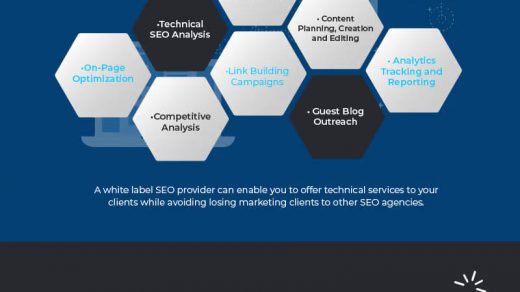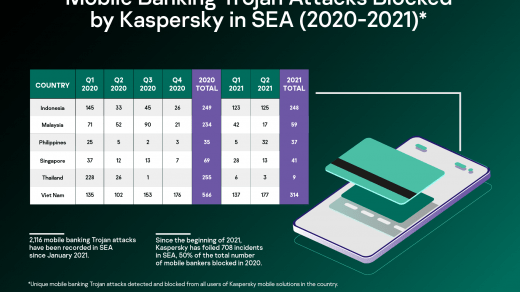
As technology advances, so does the way we work. The emergence of the metaverse has opened up new opportunities for businesses to connect with their customers and employees in ways that were once unimaginable. Metaverse development companies and metaverse development services are now playing a critical role in shaping the future of work.
The metaverse, a term first introduced by Neal Stephenson in his sci-fi novel Snow Crash, is a shared virtual space created by the combination of multiple virtual worlds. It is a dynamic, interactive 3D digital environment that enables users to engage with one another and digital elements in real time. As virtual reality (VR) and augmented reality (AR) technologies continue to advance, the metaverse is becoming increasingly accessible to businesses.
The potential of the metaverse for businesses is enormous. Companies can use the metaverse to create virtual workspaces, allowing employees to work remotely while still feeling like they are in the same physical space. The metaverse can also be used to create immersive training and onboarding experiences, allowing employees to learn and practice in a virtual environment.
Metaverse development companies and metaverse development services are at the forefront of this transformation. They are helping businesses create custom virtual experiences that meet their unique needs. These companies use a variety of tools and technologies, including VR and AR, to create immersive and engaging virtual environments.
In this blog post, we will explore the future of work in the metaverse and how metaverse development companies and metaverse development services are transforming the way we work. We will look at some of the ways businesses are using the metaverse to improve their operations, and we will discuss the challenges and opportunities that lie ahead.
Market States on metaverse future in the working industry
The future of work in the metaverse has the potential to completely transform the working industry. As businesses continue to embrace the metaverse, we can expect to see a number of changes in the way we work, interact with colleagues, and connect with customers. Here are some potential impacts that the metaverse could have on the working industry:
- Remote work will become even more common: The metaverse can create virtual workspaces that allow employees to work remotely but still feel like they are in the same physical space as their colleagues. This could lead to even greater adoption of remote work as a standard practice.
- Improved collaboration and communication: The metaverse can enable real-time collaboration and communication, allowing employees to work together in new and innovative ways. For example, virtual whiteboards and 3D modeling tools can help teams brainstorm and visualize ideas more effectively.
- Enhanced training and onboarding: The metaverse can create immersive training and onboarding experiences for employees, allowing them to learn and practice in a virtual environment. This can lead to more effective and efficient training, as well as better retention of knowledge and skills.
- New business opportunities: The metaverse can create new business opportunities for companies, especially in the areas of virtual events, virtual product demonstrations, and immersive customer experiences. This can lead to new revenue streams and greater customer engagement.
- Increased demand for metaverse development services: As more businesses adopt the metaverse, there will be a growing demand for metaverse development services, including companies that specialize in creating custom virtual experiences.
Overall, the metaverse has the potential to revolutionize the working industry by creating new opportunities for collaboration, communication, training, and customer engagement. While there are still challenges to overcome, the future of work in the metaverse is bright and full of possibilities.
What is virtual reality?
Virtual reality (VR) is a technology that allows users to experience a computer-generated 3D environment as if they are actually there. This is achieved by using a VR headset or similar device that tracks the user’s movements and adjusts the image on the display accordingly, giving the user the impression of being immersed in a virtual world.
VR can be used for a wide range of purposes, including entertainment, education, training, and therapy. In the entertainment industry, VR can be used to create immersive video games, movies, and experiences that transport the user to a new world. In the education and training industries, VR can be used to create simulated environments that allow students and professionals to practice and learn new skills in a safe, controlled setting.
The technology behind VR includes a combination of hardware and software components, including the VR headset, sensors, display, and controllers. The headset typically includes a high-resolution display that is split into two screens, one for each eye, and the sensors track the user’s head movements and adjust the image accordingly to create a realistic and immersive experience.
Overall, virtual reality is a powerful tool that has the potential to transform the way we interact with digital content and each other, allowing us to experience new worlds and scenarios in ways that were previously impossible.
How Virtual Reality or metaverse is Transforming Business
Virtual reality (VR) and the metaverse are transforming businesses in a variety of ways. Here are some of the ways in which these technologies are having an impact:
- Customer Engagement
- Employee Training
- Product Design
- Remote Collaboration
1. Customer Engagement
Virtual reality (VR) can significantly improve customer engagement in the metaverse by providing an immersive and interactive experience for customers. Here are some ways that VR can help:
- Interactive product demonstrations: In the metaverse, businesses can use VR technology to create immersive product demonstrations that allow customers to interact with products in a simulated environment. This can help customers better understand the features and benefits of products and make more informed purchase decisions.
- Virtual showrooms: Businesses can also create virtual showrooms or stores using VR technology in the metaverse. This provides a unique and engaging way for customers to explore products and make purchases.
- Virtual events: VR can be used to create virtual events in the metaverse, such as product launches or conferences. This allows businesses to engage with customers in a more immersive and interactive way, providing a more memorable experience than traditional online events.
- Customized experiences: With VR, businesses can create customized experiences for individual customers based on their preferences and interests. This can be done through personalized product recommendations or customized communication channels, helping to build stronger customer relationships.
Overall, VR technology provides businesses with a powerful tool for improving customer engagement in the metaverse. By creating immersive and interactive experiences, businesses can build stronger customer relationships, increase brand awareness, and drive sales.
2. Employee Training
Virtual reality (VR) can be an effective tool for employee training, providing a safe and controlled environment where employees can learn and practice new skills. Here are some of the ways VR can be used for employee training:
- Simulated Scenarios: VR can be used to simulate realistic work scenarios, allowing employees to practice skills and procedures in a safe and controlled environment. This can be especially useful in industries where high-risk scenarios may occur, such as healthcare or aviation.
- Interactive Learning: VR can provide an interactive and engaging way for employees to learn new skills. Employees can learn by doing, rather than just listening or reading, leading to higher retention rates and improved skill development.
- Remote Training: VR can facilitate remote training, allowing employees to train from anywhere with an internet connection. This can save businesses time and money on travel expenses and make it easier to train employees in different locations.
- Consistent Training: VR can provide a consistent training experience for all employees, ensuring that everyone receives the same level of training and is well-equipped to perform their job duties.
- Cost Savings: By using VR for training, businesses can save on the costs associated with traditional training methods, such as hiring trainers or renting training facilities.
3. Product Design
In the metaverse, virtual reality (VR) can be used to enhance the product design process in a number of ways. Here are some examples:
- Immersive Prototyping: VR can be used to create immersive prototypes of products in the metaverse, allowing designers to see and interact with their designs in a virtual environment. This can help designers catch design flaws or make changes before a physical prototype is created, saving time and resources.
- Customized Product Design: In the metaverse, businesses can use VR to create customized product designs for individual customers. This can be done through personalized product recommendations or by allowing customers to interact with products in a simulated environment to create a design that meets their specific needs and preferences.
- Interactive Showrooms: In the metaverse, businesses can create virtual showrooms using VR technology that allows customers to explore and interact with products in a virtual environment. This can be a more engaging and memorable experience than traditional online shopping, leading to increased customer engagement and sales.
- Collaborative Design: VR technology in the metaverse can facilitate collaborative design by providing a virtual environment where multiple designers can work together in real-time. This can help to streamline the design process and improve communication among team members.
Overall, VR technology in the metaverse can provide businesses with a powerful tool for enhancing the product design process, improving customer engagement, and driving sales. As VR technology continues to evolve, we can expect to see even more innovative and effective applications for product design in the metaverse.
4. Remote Collaboration
In the metaverse, virtual reality (VR) technology can be used to enhance remote collaboration by providing an immersive and interactive environment for team members to work together. Here are some examples:
- Virtual Meetings: In the metaverse, virtual reality technology can be used to create virtual meeting spaces where team members can gather and collaborate in a more immersive and engaging way than traditional video conferencing. This can help to improve communication and foster a sense of team cohesion.
- Collaborative Workspaces: In the metaverse, businesses can use VR technology to create virtual workspaces where team members can collaborate on projects in real-time, regardless of their physical location. This can help to streamline the collaboration process and improve efficiency.
- Remote Training: VR technology in the metaverse can be used to provide remote training for team members, allowing them to learn new skills and techniques in an immersive and interactive way. This can be especially useful for teams that are distributed across multiple locations.
- Virtual Conferences and Events: In the metaverse, businesses can use VR technology to host virtual conferences and events that bring team members together from around the world. This can help to improve engagement and participation in these events, while also reducing travel costs and logistical challenges.
Conclusion
The Metaverse is an emerging digital world that offers new possibilities for the future of work. With the growth of Virtual Reality (VR) technology, businesses can create immersive and interactive environments where teams can work collaboratively from anywhere in the world. The Metaverse has the potential to transform the way we work, communicate, and collaborate, providing new opportunities for innovation and creativity.
In the Metaverse, remote work can be made more engaging and productive by providing a more immersive and interactive environment. Virtual meetings, collaborative workspaces, and remote training can all be improved with the use of VR technology. Additionally, businesses can use the Metaverse to host virtual conferences and events, reducing travel costs and logistical challenges.
The Metaverse also has potential applications in healthcare, product design, customer engagement, and employee training. For example, VR technology in the Metaverse can be used to provide medical training, product design simulations, virtual reality therapy, and remote employee training.
However, there are also potential challenges that need to be addressed as we move towards a more connected and immersive digital world. Privacy and security concerns, the digital divide, and ethical considerations will need to be addressed as the Metaverse continues to grow.
Overall, the Metaverse presents a new frontier for the future of work, with the potential to enhance collaboration, innovation, and productivity. As technology continues to evolve, we can expect to see even more exciting and innovative applications for the Metaverse in the years to come.
Author BIO
Rohan Singh is a Chief Executive Officer at SemiDot Infotech, Top rated multi-award-winning blockchain development company providing a full suite of services and solutions to small, medium, and big enterprises, product companies & new-age start-ups.
He has extensive experience working for multinational companies and knows what it takes to take a company to the next level. He has a master’s degree in computer science. Rohan finds covering the tech world to be an exciting and engaging experience as each day brings new and groundbreaking technologies to explore and write about.




Recent Comments